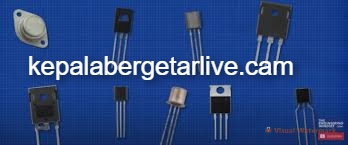identification
Welcome to the world of transistors, where tiny devices have revolutionized the way we live and work. From powering your favorite electronic gadgets to enabling space missions, transistors play an indispensable role in modern technology. But what exactly is a transistor, how does it work, and what are its applications? In this blog post, we’ll answer all these questions and more as we delve into the fascinating world of electrical transistors. So buckle up, grab a cup of coffee (or tea), and let’s get started!
What is a transistor?
A transistor is a small electronic device that has the ability to amplify and convert electronic signals. It consists of semiconductor materials such as silicon or germanium, which have unique electrical properties.
The name “transistor” comes from its function as a transfer resistor. It was invented in 1947 by William Shockley, John Bardeen, and Walter Brattain at Bell Labs. The invention of the transistor revolutionized the field of electronics and paved the way for modern technology.
Transistors can be used to control the flow of current and voltage between two points in an electrical circuit. They can also act as switches, turning on or off when needed. This makes it perfect for use in computing devices such as smartphones, laptops and tablets.
There are various types of transistors available in the market today including bipolar junction transistor (BJT), field effect transistor (FET), insulated gate bipolar transistor (IGBT) among others.
Transistors are an essential component of any electronic device we use today because they allow us to control electricity with precision while using less power than traditional methods require.
How do transistors work?
A transistor is a semiconductor device that allows control of the electric current that flows through it. It consists of three layers – emitter, collector, and base. The flow of electrons through this layer can be controlled by applying an electrical signal to the base.
When no voltage is applied to the base, the transistor remains in its default state and does not allow any significant current to flow between the emitter and collector. But when a small voltage is applied to the base, it causes a larger current to flow from the emitter to the collector.
This increase in current allows the transistor to act as an amplifier or switch for electronic signals. When used as an amplifier, a small variation in input voltage results in a large variation in output voltage. As a switch, it either completes or breaks an electrical circuit based on whether there is sufficient input voltage at its base.
The specific behavior of each type of transistor depends on its construction and the materials used in it. However, all transistors have two main modes: cut-off mode (no collector-emitter current) and saturation mode (maximum emitter-collector current).
Understanding how transistors work requires some knowledge of quantum mechanics but can be simplified to basic principles that are easy enough for anyone interested in electronics to understand.
Various Types of Transistors
When it comes to transistors, there are actually several different types to choose from. Each type has its own unique features and applications. Here are some of the most common types:
1. Bipolar Junction Transistor (BJT) – This is one of the oldest and most commonly used types of transistors. A BJT can be either NPN or PNP, depending on its configuration.
2. Field Effect Transistor (FET) – FETs are known for their high input impedance and low noise level. They come in two main types: JFET and MOSFET.
3. Darlington Transistor – This type of transistor consists of two BJTs connected together to provide a higher current gain than a single BJT.
4. Insulated Gate Bipolar Transistors (IGBTs) – IGBTs combine the best features of both BJTs and FETs, making them ideal for high voltage applications.
5. Photo Transistor – As the name suggests, this type of transistor is specifically designed for use with light signals.
Choosing the right type of transistor depends on the needs and requirements of your specific application. It’s important to do your research before making a decision so you can choose the best type for your project!
Application of transistors
Transistors are widely used in various electronic devices and systems because of their ability to amplify signals, turn them on or off, and act as oscillators. One of the most common applications of transistors is in amplifiers. It can be used for audio amplification, radio frequency (RF) amplification and more.
